Which new Samsung wearable should you choose: Gear Sport vs Gear Fit 2 Pro vs Gear Icon X (2018) comparison

Samsung unveiled three new wearables at IFA 2017: the Samsung Gear Sport, the Gear Fit 2 Pro, and the Gear Icon X (2018).
And they are quite different: the Gear Sport is a round smartwatch, the Fit 2 Pro is a fitness band with more sporty look and a tinier display, and the new Gear Icon X are smart wireless earbuds. But they all do some things in a similar way, and all of them are actually able to help you in some way during a work-out.
So let's look at the three and how they differ, not just in their obvious physical difference, but also in features and functionality.
Gear Icon X 2018: sports features and how does it fit vs Gear Sport and Gear Fit 2 Pro
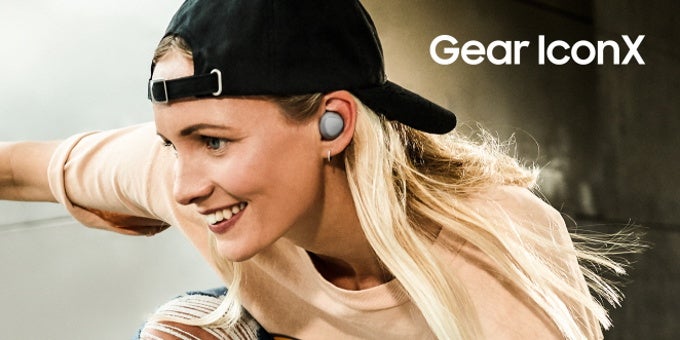
First, the Gear Icon X (2018). While the earbuds lack the heart rate sensor that was present on the original edition, the new ones support Bixby, Samsung's smart voice assistant, and have a Running Coach mode with real-time, in-ear updates. The big update to the cordless headphones, however, is certainly in battery life: from an hour and a half on the original edition, they can now stream music for five hours, and the case they come in allows you one full recharge. The Icon X also feature 4 gigs of on-board storage, so you can take your music on the go.
The Gear Sport and Gear Fit 2 Pro both up-end the earbuds in terms of functionality, so - of course - there is no comparison in terms of actual fitness tracking.
Both the Gear Sport and Gear Fit 2 Pro support Samsung's new premium partnership with Spotify, Spotify Offline. This new mode allows you take your Spotify songs on the go when you don't have an LTE connection.
Gear Sport or Gear Fit 2 Pro
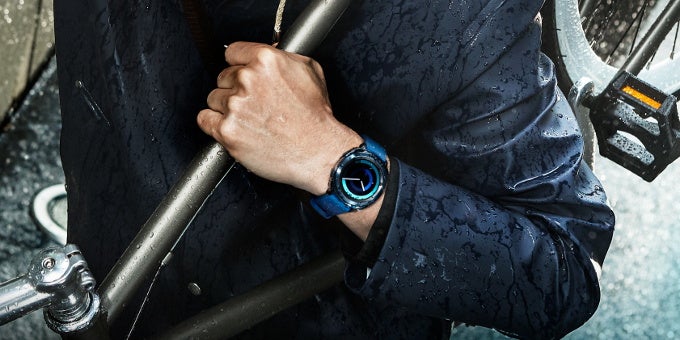
Samsung Gear Sport
The two devices that you will have a hard time choosing between are the Gear Sport and the Gear Fit 2 Pro. In fact, the big difference between the two is in the looks and screen: the Sport has a round, 1.2-inch Super AMOLED display with a 320 x 320 pixel resolution, while the Fit 2 Pro sports a curved, taller and narrower 1.5-inch Super AMOLED screen with 216 x 432 pixels of resolution. Both are powered by an identical 1.0 GHz dual-core chip, but the Gear Sport has slightly more RAM: 768MB vs 512MB on the fitness band.
The difference in size is note-worthy:
- 42.9 x 44.6 x 11.6 mm, at 50 g weight on the Gear Sport
- 25.0 x 51.3 mm, 34g (Large) and 33g (Small) on the Gear Fit 2 Pro
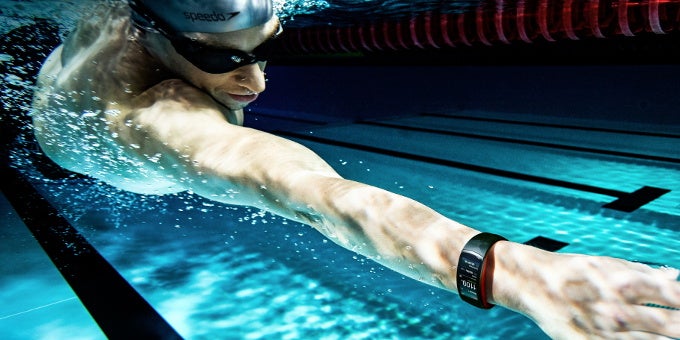
Gear Fit 2 Pro
Importantly, the Fit 2 Pro is the more comfortable one to wear, it's not as big and you can workout with it no problem, while the watch is more noticeable on the wrist.
In terms of functions and fitness tracking, there is parity: both deliver notifications, both support automatic workout detection and both can be taken on a swim with their 5 ATM water rating. But it's easier to navigate the interface on the Gear Sport: the rotating bezel is a big helper and the Fit 2 Pro lacks this form of input.
There is also the difference in price: $200 for the Fit 2 Pro and $300 for the Gear Sport.
Gear Sport vs Gear S3
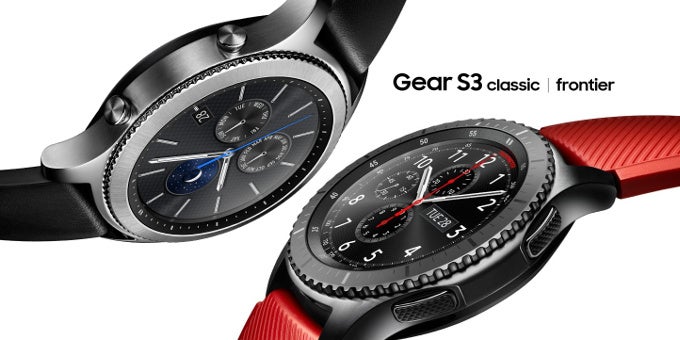
The Gear S3 comes in two flavors, a rugged frontier and a cleaner, classic model
And if you are wondering whether to get the slightly pricier Gear S3 or the sportier Gear Sport, you should know that the number one distinction between the two is purely physical: the Gear S3 is a very big smartwatch, while the Gear Sport is big, but it's not that big. The Sport has a 43mm watch face, while the S3 rocks a massive, 46mm watchface. But being bigger, means the Gear S3 has more features in some aspects: it has the advantage of 4G LTE data, so it can operate independently, while the Gear Sport lacks this function and requires you to be tethered to your phone. The new Sport also does not have Magnetic Secure Transmission (MST) and it does not support MST payments to older terminals (but is still has NFC). The Gear Sport is slightly thinner and lighter, probably exactly because it does not have an LTE module. Both have a built-in GPS for accurate workout tracking.
The Gear Sport, however, is clearly the better suited one for sports: it features an outstanding 5ATM water proofing that allows you to take it out for a swim at sea or in the ocean, while the S3 series do not support such a feature.
Gear Sport vs Gear S2
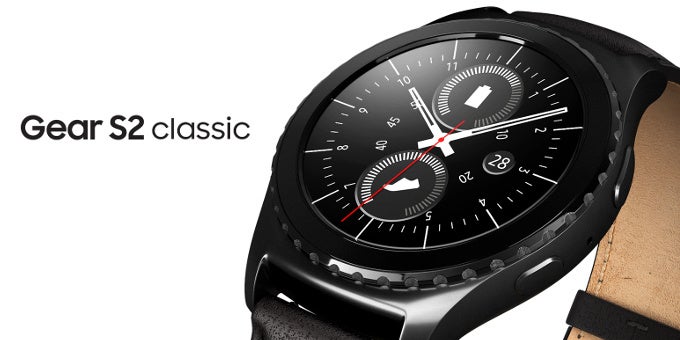
The old Gear S2 is cheaper, better for smaller wrists and still performs well
Believe it or not, the good old Samsung Gear S2 and Gear S2 Classic that were released last year are still on sale and available for lucrative prices of around $250. They still run very smoothly on Samsung's Tizen platform, and are smaller and stylish in a way that the rugged-looking Gear S3 or Gear Sport just aren't.
But they also lack in features: while both the S2 and S2 Classic do have a heart-rate sensor, neither of the currently sold models have independent data connectivity, or GPS. You also cannot swim while wearing the S2 and S2 Classic, as the two only offer very basic level of water protection, nowhere near close to the 5ATM rating of the Gear Sport that you can easily take out for a swim at the pool or even the ocean.
Note the price difference as well:
- Gear Sport: $350
- Gear S2: $250
- Gear S2 Classic: $300
Final words
Samsung has built an admirable selection of wearables and cordless headphones. It has something for everyone: from the big and rugged, and feature-packed Gear S3 at the top, to the slightly smaller and suitable for swimmers Gear Sport, to the Gear S2 series that work great with smaller wrists, and then the new Fit 2 Pro fitness band that is very comfortable to wear.
So which one would you go for?













Things that are NOT allowed: